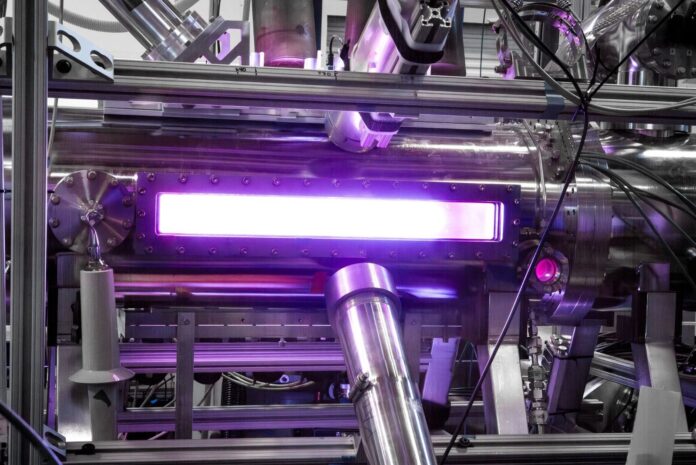[ad_1]
A recent scientific publication, released in Physical Review Letters, provides specific measurements conducted on Zap Energy‘s Fusion Z-pinch Experiment (FuZE). The measurements focused on the electron temperatures of the plasma, which ranged from 1 to 3 keV, corresponding to around 11 to 37 million degrees Celsius (20 to 66 million degrees Fahrenheit).
The capacity of electrons to efficiently cool a plasma is a significant challenge for fusion systems. FuZE, being the simplest, smallest, and most cost-effective device, has successfully overcome this hurdle. Zap’s technology has the potential to create a commercial product that can generate copious, carbon-free energy on demand, offering a shorter and more realistic solution for global energy needs.
Over the past ninety years, only a few of fusion technologies have proven capable of generating a thermal fusion plasma with electron temperatures above 10 million degrees Celsius, which is about equivalent to the temperature at the center of the sun. Zap Energy has achieved a significant milestone by surpassing the plasma temperature of its competitors using their distinctive sheared-flow-stabilized Z pinch technique, despite its smaller size.
FuZE received its initial funding for research from the U.S. Department of Energy’s Advanced Research Projects Agency – Energy (ARPA-E) while being conducted at the University of Washington. In 2020, the device was relocated to Zap Energy’s specialized research and development facilities shortly after the company’s establishment. The data presented in this study were gathered in 2022 through a joint effort supported by ARPA-E, involving scientists from Lawrence Livermore National Laboratory (LLNL) and University of California, San Diego (UCSD). The researchers from LLNL and UCSD played a leading role in developing the measurement method utilized to get these findings.
Zap Energy utilizes a straightforward plasma confinement technique called a Z pinch, in which substantial electric currents are directed via a slender plasma filament. The conducting plasma autonomously generates electromagnetic fields, resulting in both heating and compression. Although Z-pinch fusion has been under experimentation since the 1950s, its progress has been hindered by the short duration of its plasmas. However, Zap has successfully addressed this issue by implementing a technique known as sheared-flow stabilization, which involves applying a dynamic flow through the plasma.
[ad_2]
Source link





